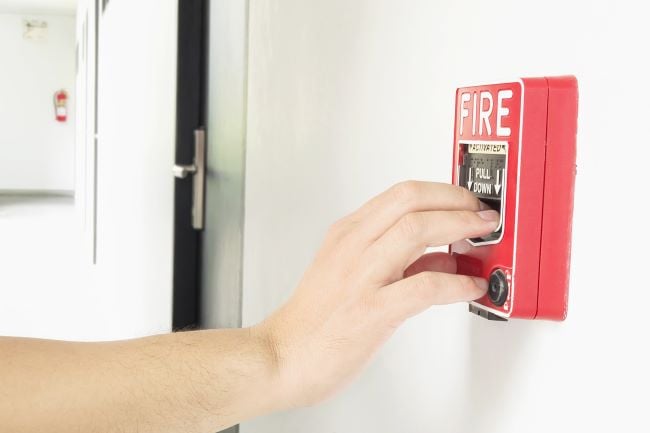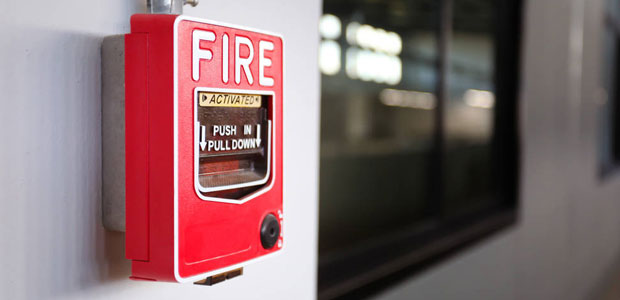Phone:
(701)814-6992
Physical address:
6296 Donnelly Plaza
Ratkeville, Bahamas.

Fire alarm activation occurs when the system detects smoke, heat, or other indicators of fire. This prompts an alert to warn occupants of potential danger.
Ensuring safety in residential and commercial spaces, fire alarms play a crucial role in emergency preparedness. Quick and reliable detection of a fire’s early signs helps to minimize damage and protect lives. Fire alarm systems are a blend of technological sophistication and simplicity; they consist of sensors that detect fire-related phenomena, control panels that process this information, and auditory and visual devices to notify occupants.
Regular maintenance and testing are essential for optimal functionality. Knowing how fire alarm systems operate is fundamental for both safety and regulatory compliance, making understanding their activation significant for property owners and residents alike.

Credit: blog.koorsen.com
Understanding the meaning of fire alarm activation can save lives. A fire alarm’s cry is a warning, calling occupants to action and emergency services to assistance. It’s crucial for safety in homes, schools, and workplaces. Let’s dive into the basics of fire alarm systems and explore the key components.
Fire alarm systems are life-saving technologies. Their primary role is to detect fires and alert people within a building. A quick response can prevent catastrophic damage and loss. These systems vary in complexity, from basic smoke detectors in homes to advanced systems in large buildings.
Every fire alarm system includes several key components. Together, they create a network that ensures swift fire detection and alerts. Here’s a closer look at these critical pieces.
| Component | Function |
|---|---|
| Control Panel: | The system’s brain which processes information and sends out alarms. |
| Initiating Devices: | Sensors that detect fire, such as smoke and heat detectors. |
| Notification Appliances: | Devices that warn people, like sirens and strobe lights. |
| Secondary Power Supply: | Backup power to ensure the system works during an outage. |

Credit: en.wikipedia.org
The piercing sound of a fire alarm serves a critical purpose: to alert occupants of a potential fire, prompting them to take immediate action. However, not every alarm signals a real fire. Understanding the reasons for fire alarm activation is crucial for safety and efficiency. Let’s delve into the common causes that trigger these alarms.
False alarms can create unnecessary panic and disrupt daily activities. Here are the frequent culprits:
When an alarm detects a real fire, prompt action saves lives. True fire occurrences leading to activation include:
| Type of Event | Description |
|---|---|
| Flames | Visible fire or flames detected |
| Heat | Rapid increase in temperature |
| Smoke | Presence of smoke from burning material |
| Combustion Gases | Gases produced during burning, like carbon monoxide |
Recognizing these fire alarm activators enhances our preparedness for both false alerts and real emergencies. Stay informed and ensure that fire alarm systems remain in optimal working condition.
When a fire alarm rings, it is a signal for danger. It means you need to act fast. Your safety and the safety of others depend on how you respond. Knowing what to do can save lives. Let’s dive into the right steps to follow during a fire alarm activation.
Stay calm and be quick. A fire alarm means you must move, but safely. Here’s what to do:
There’s a plan for getting everyone out safely. Follow these steps:
If you’re responsible for others, such as children, lead them to safety.
Investigating Activation Post-Incident plays a critical role in maintaining a safe environment. After a fire alarm sounds, it is crucial to determine why it was triggered. This not only helps in assessing potential threats but also in improving system reliability.
Once the immediate danger is over, a thorough investigation begins. Specialists look into various factors to find out what caused the alarm to go off. They check if there was an actual fire or smoke that activated the alarm. Sometimes, environmental factors like dust or steam might trigger the sensors. Technicians also inspect the system for any malfunctions or faults.
Reducing false alarms is important. They can cause unnecessary panic and weaken confidence in the alarm system. To prevent them, several steps are taken:
| Action | Benefit |
|---|---|
| Clean Sensors | Minimizes dust-triggered alarms |
| Update Systems | Keeps technology current to reduce faults |
| Refine Placement | Avoids activation from non-fire heat sources |
Understanding the meaning of fire alarm activation is crucial. Modern technology has revolutionized fire alarms. Days of simple smoke detection are far behind. Today’s systems boast amazing features. They improve safety remarkably. Let’s explore some cutting-edge advancements.
False alarms used to be common. Not anymore. Technological advancements have introduced sophisticated sensors. These sensors differentiate between burnt toast and a real fire. This minimization of false positives is vital. It keeps unnecessary panic and resource wastage at bay. Several innovations in this area include:
Fire alarms have become smarter. Integration with home automation systems is a game changer. Now, alarms connect to the internet. They enable remote monitoring. Alerts go straight to your smartphone. This smart technology can save lives and properties.
| Feature | Benefit |
|---|---|
| Real-Time Alerts | Quick response to potential dangers. |
| Connectivity | Integrated with other smart home devices. |
| Self-Diagnosis | Alerts for maintenance and battery replacement. |
These systems provide not just alarms but also valuable data. For instance, they track trends and provide insights on air quality. They are easier to maintain. Firmware updates bring new features and improvements over time.
Understanding fire alarm activation is crucial for safety and legal reasons. When a fire alarm sounds, it means potential danger and an immediate response is vital. This article explores the rules and the direct consequences of not heeding fire alarm warnings.
Different areas have specific fire alarm regulations. These ensure buildings are equipped for fire emergencies. Compliance with these rules is not optional; it’s a legal requirement for the safety of occupants. Take a look at the key points:
Failing to act on a fire alarm can lead to severe outcomes. These are some of the consequences:
| Action | Result |
|---|---|
| Ignoring the alarm | Potential harm to inhabitants |
| Evacuation delay | Increase in property damage |
| Lack of response | Legal penalties |

Credit: ohsonline.com
Alarm activation occurs when a security system detects an intrusion or disturbance and triggers an alert, often notifying property owners or authorities.
Activating a fire alarm triggers an audible and visual alert, signaling an emergency. This prompts building evacuation and notifies emergency services to respond. Regular maintenance and testing ensure proper functionality.
Stay calm and evacuate the building immediately. Follow the posted emergency exit routes. Call 911 once you are safely outside. Do not use elevators during evacuation. Await further instructions from emergency personnel.
Activate your fire alarm immediately upon detecting signs of fire, such as visible smoke or flames. Also, regularly test the alarm to ensure it’s working properly for emergencies.
Understanding fire alarm activation helps ensure safety and preparedness. It signals potential danger, prompting swift action. Regular maintenance and awareness are key. Stay informed and prioritize safety—your response to an alarm could save lives. Remember, a working fire alarm system is your first line of defense in fire emergencies.